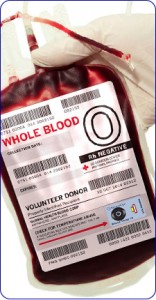Come see the Shockwatch Blood Temp 10 in action at the AABB annual meeting and CTTXPO in Denver, Colorado Monday, Oct. 14th, 1:30 pm booth 1654. You can also hear about best practices keep your blood supply safe in our Learning Lab “Before Good Blood Goes Bad.”
Heating, freezing and thawing all affect the viability of blood and blood products and components. Temperature monitoring is a vital step in maintaining the safety of the world’s blood supply, ensuring that blood already known to be safe, remains safe.
A case study will be shared during the presentation to show how temperature indicators not only help identify potentially heat damaged blood but also assist with identifying critical control points within your blood logistics cycle.
According to the WHO around 107 million blood donations are collected globally every year and it is generally accepted that 2% of blood may be discarded. The use of suitable equipment and good management of blood cold chain are important means of minimizing losses and donated blood.
A lack of product data leads to an unpredictable blood cold chain, which will create an environment of guesswork, assumptions and inaccurate predictions when it comes time to make blood safety and cost-recovery related decisions.
The lack of accurate data due to a poorly designed temperature tracking system will force the disposal of unadulterated blood and create financial loss. These results are very expensive consequences that can be overcome with the implementation of the Blood Temp 10. Developing a system of bag level temperature monitoring will deliver the results required to effectively build and maintain predictable cold chain management, allow for a greater level of cost recovery and drive awareness throughout the blood cold chain.
Bacterial contamination of blood components is the most frequently reported cause of transfusion-related fatalities. BT10 ensures that bacteria growth due to elevated temperatures has not compromised blood during storage, transportation and distribution
Increase patient safety by confirming blood product is kept within the required conditions. If unsafe temperature conditions occur the BT10 will give you an assurance to know that you’ve captured those issues prior to introducing unsafe blood to a patient.
Mainlining temperature control during storage and shipment is of extreme importance in order to uphold high standards of regulatory compliance. There are many variables that will negatively affect the safety of your blood supply. Blood Temp 10 will provide auditable proof that each individual blood bag has been maintained according to relevant regulations.
We invite you to learn more – leave us your contact information and we will schedule a time for you to come visit the booth for a live demonstration.

